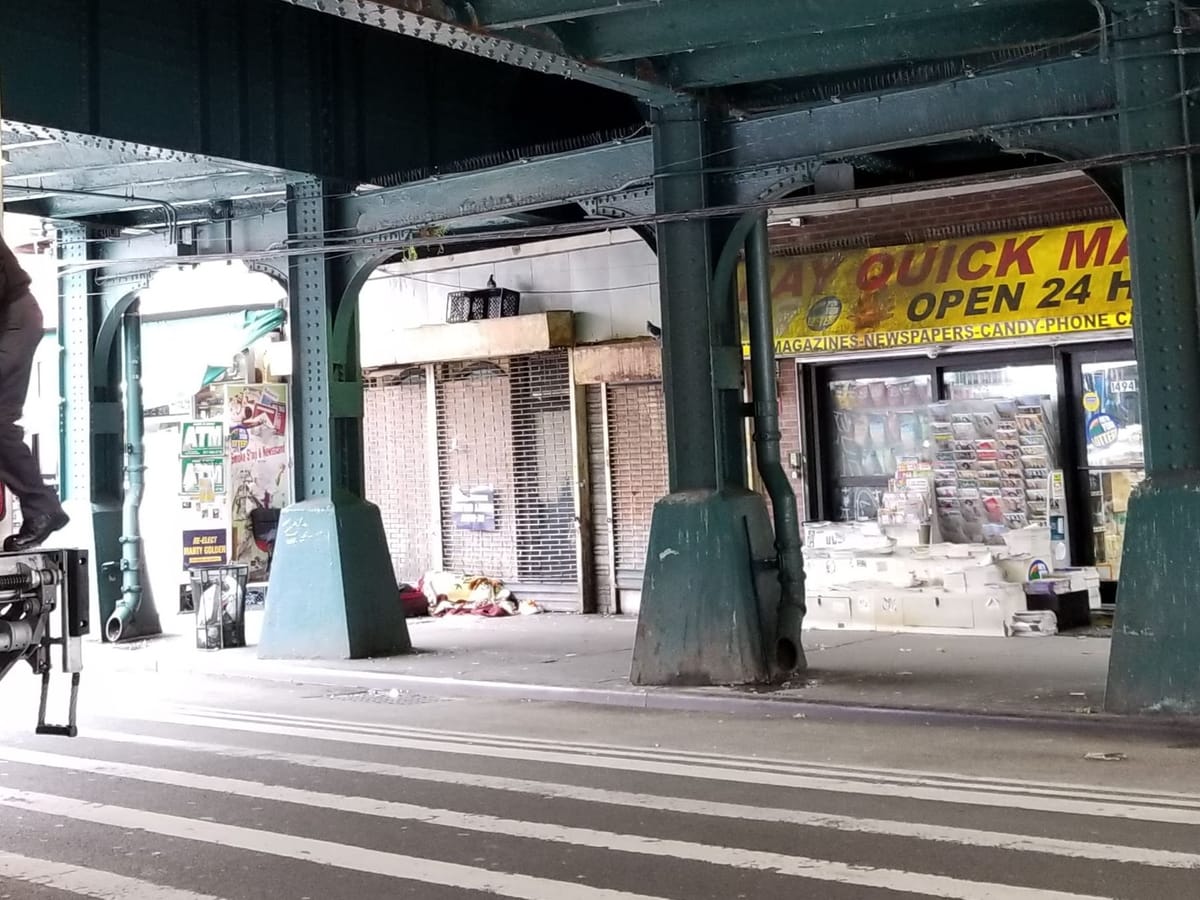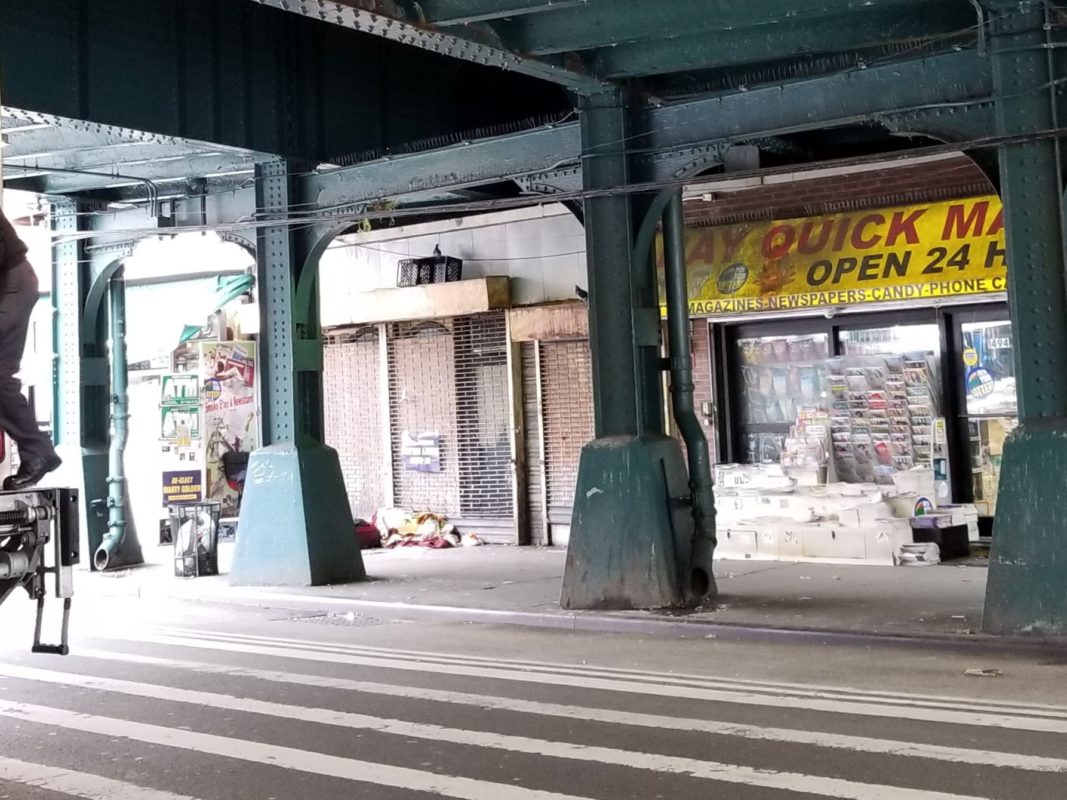Opinion: Stop Opening New Temporary Shelters, Let The Next Mayor Work On Permanent Solutions To Homelessness


The last seven years, for most New Yorkers, have felt like we are trapped in a series of unfortunate events, starring our mayor.
From his mismanagement of NYCHA, to his $1 billion ThriveNYC scam. From his destruction of small businesses, to his mishandling of the city’s initial reaction to the COVID pandemic. From his failure to address rising crime rates, to his destruction of the city’s public school system. Suffice it to say, there are more de Blasio mishaps than there are available vaccine doses in New York City. But increasingly, the crisis that is threatening to overshadow any successes in his eight-year term as Mayor is homelessness.
The economic chaos wrought by COVID has severely exacerbated some of the major social issues that have been lingering just below the public consciousness for years. Predominantly, poverty and homelessness have left tens of thousands of New Yorkers feeling helpless and abandoned by a city that did not have the preset infrastructure to engage the problem head-on.
Homelessness in particular has been a growing problem here in New York City. Over the last six years, the number of homeless individuals, including unsheltered people who are living ‘on the street’, has ballooned. With COVID aggravating the situation, it is more urgent than ever for city officials to consider a fresh model to combat homelessness, as opposed to building upon an already faulty system.
Instead of rethinking the system to make it more effective for the current circumstances, the Department of Homeless Services has redoubled their commitment to opening new homeless shelters across the city. In 2017, Mayor de Blasio released his “Turning the Tide” plan to reduce homelessness. His plan’s stated goal was to reduce the city’s shelter population by closing down cluster sites and expanding social services within shelters, and then streamlining and quickening the process of homeless individuals obtaining permanent housing. Inexplicably though, “Turning the Tide” also pledged to open 90 new shelters citywide, seemingly to place the families and individuals who were previously housed in cluster sites.
As leaders in our respective communities, we have seen the firsthand results of a plan to tackle homelessness that doesn’t subscribe to a long-term perspective. We must not lose sight of the bigger picture, which is that the shelter system is a crutch, albeit a necessary crutch. Building new shelters is an unproductive use of limited city dollars, particularly when the shelter model is an unstable and unappealing dwelling for individuals experiencing street homelessness. Even more outrageous is that existing shelters are frequently falling short in terms of supportive services, specifically employment assistance, mental health guidance, and most importantly, access to permanent housing. This ultimately elongates the amount of time an individual is homeless.
It is critical to stay cognizant of the human side of homelessness, particularly chronic homelessness. There can be any number of reasons why a person becomes homeless in New York City, but there is only one reason why someone stays homeless in New York City. A lack of individualized, supportive care and guidance.
In 2015, Utah became renowned for ‘winning the war on chronic homelessness’, reducing their chronic homeless population by 90%. In 2005, they set in motion a ten-year plan to double the number of supportive permanent housing options for the homeless. They combined city, state, federal, and private resources to build new developments, revamp abandoned hotels, and identify scattered units in private apartment complexes to be used as supportive housing. This focus on Housing First (the name of the plan, initiated by Governor Jon Huntsman in 2005) enabled the vast majority of the state’s resources to be focused on housing as the ultimate and most prevalent goal.
City officials have announced their intention to open up to twenty new shelters this year – the last year that Mayor de Blasio holds office. They plan to sign leases that could last well into the next administration, leaving limited options for the next New York City mayor to implement his or her own vision of tackling homelessness. If the next mayor chooses to focus on a permanent housing model, he/she will find themselves saddled with the ill-advised mission of a previous administration. The broad policy decisions that a mayor makes have a substantial impact on the direction of the entire city, as opposed to smaller scale choices made by more local officials, like a city Councilman.
The time to begin a path towards rapid is now, when vacancy rates are higher than any other time in recent memory. In September, an analysis of rental vacancies in Manhattan found it had reached an all-time high of nearly 6%. Data from Douglas Elliman and Miller Samuel indicated that the number of vacancies had nearly hit 16,000. And rental rates have dropped tremendously by 11% – a veritable steal by Manhattan standards. Lower priced apartments across the city, according to the Community Housing Improvement Project, had vacancy rates as high as 7.1% in August 2020. Yet, while these thousands of apartments sit empty and undeveloped city-owned land is under-utilized, the city blindly continues on its mission to build new homeless shelters.
Nobody is suggesting that solving homelessness is something that will be easily accomplished. But the infuriating thing is that the city knows the answer – they spelled it out in the “Turning the Tide” action plan. Yet they proceed with blinders on, running headlong into new shelter projects, bound to artificial deadlines and self-imposed, arbitrary goals. Someone needs to take a step back and look at the bigger picture. With less than a year left in office, it is doubtful that we will see that level of self-reflection from Mayor de Blasio. Our only hope may be the next administration, who will hopefully seize the reins and commit to a bold new plan for our city.



